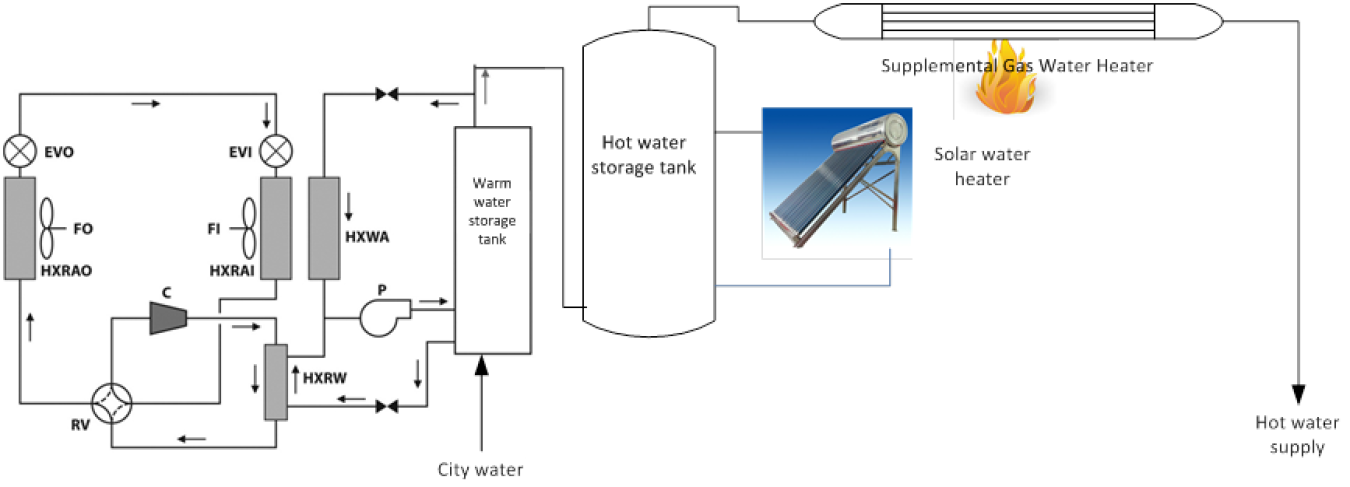
A conceptual vapor-compression cycle design (left of storage tanks) for the commercial integrated heat pump, as well as a conceptual representation of how this packaged rooftop unit would integrate with the water heating system of a commercial building (solar water heater optional). Image credit: Oak Ridge National Laboratory.
Lead Performer: Oak Ridge National Laboratory – Oak Ridge, TN
Partner: Nortek Global HVAC – O'Fallon, MO
DOE Funding: $1,200,000
Cost Share: Partner in-kind cost share exceeds DOE funding
Project Term: October 2015 – September 2019
Funding Type: Annual Operating Plan (AOP)
PROJECT OBJECTIVE
This project builds upon previously developed residential air source integrated heat pump (AS-IHP) technology to tailor designs for light commercial building applications that are cooling-dominated and have significant water heating needs (e.g., fast food restaurants, full-service restaurants, and laundries). The objective of this project is to conduct analytical, lab prototype, and field prototype evaluations leading to a commercial integrated heat pump design that satisfies performance and cost targets.
The scope of the research includes evaluation of alternative cycle, component, and system designs along with specific unit control and building integration strategies in collaboration with the CRADA partner, Nortek Global HVAC. Assuming sufficiently promising (efficient and cost-competitive) options are identified, ORNL and Nortek will collaborate to advance the development to a field test prototype evaluation stage. The BTO MYPP has not yet established primary energy savings and installed cost premium per square foot targets. In the interim, the performance target is annual amenity delivered (i.e., kWh’s of heating, cooling, and hot water delivered) divided by annual electricity consumed (by an all-electric system) to do so, or annual electric COP, of 5.5 or greater; cost target is an estimated payback period of less than five years.
PROJECT IMPACT
Assuming the project field test prototype meets the performance and cost targets above, the CRADA partner (Nortek) would be encouraged to advance the development to a production model for the U.S. commercial buildings market. Successful development will ensure market availability of this exceptionally efficient space conditioning and water heating technology. DOE’s Prioritization Tool estimates the maximum energy savings potential for the proposed system at 0.4 quads annually by 2030.
CONTACTS
DOE Technology Manager: Tony Bouza
Lead Performer: Bo Shen, Oak Ridge National Laboratory
